Implement VAEs with PyTorch.
To visualize the latent space learned by these models, I train them on MNIST dataset with a 2 dimensional latent space. After training, I encode the data in MNIST test set (10,000 images, 1,000 for each class) using the trained encoder and visualize the latent codes on a 2-D plane, coloured by their labels.
| AE | VAE | AAE | MMD-VAE |
|---|---|---|---|
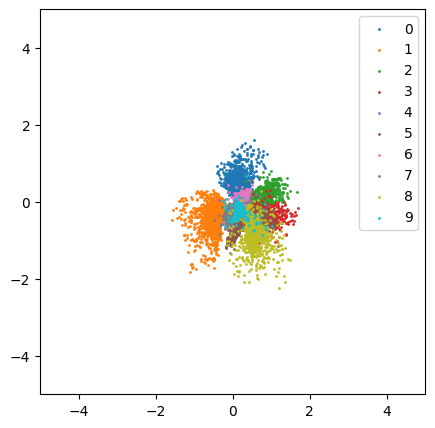 |
 |
 |
 |
- The latent space of AE (autoencoder) is not regularized and is solely learned from reconstructing the data.
- The latent space of VAE is regularized by
$\text{KL}(q_\phi(z\vert x)\Vert p(z))$ , which encourages the encoder to map all the input to the same prior distribution (usually the standard normal distribution). - The latent space of AAE is regularized by
$\text{JS}(q_\phi(z)\Vert p(z))$ via adversarial training. Only the amortized distribution of the latent codes is encouraged to approach the prior distribution. - Similar to AAE, MMD-VAE (a special case of InfoVAE) is regularized by
$\text{MMD}(q_\phi(z)\Vert p(z))$ . However, the latent space distribution does not seem to be as good as AAE.
By traversing along one dimension of the latent code while fixing the other dimensions, we can find out which dimension controls which type of semantic attribute. Ideally, in a well-disentangled latent space, each dimension only controls a single type of attribute, such as smiling, wearing glasses, hue, etc.
| VAE | beta-VAE (beta=20) |
|---|---|
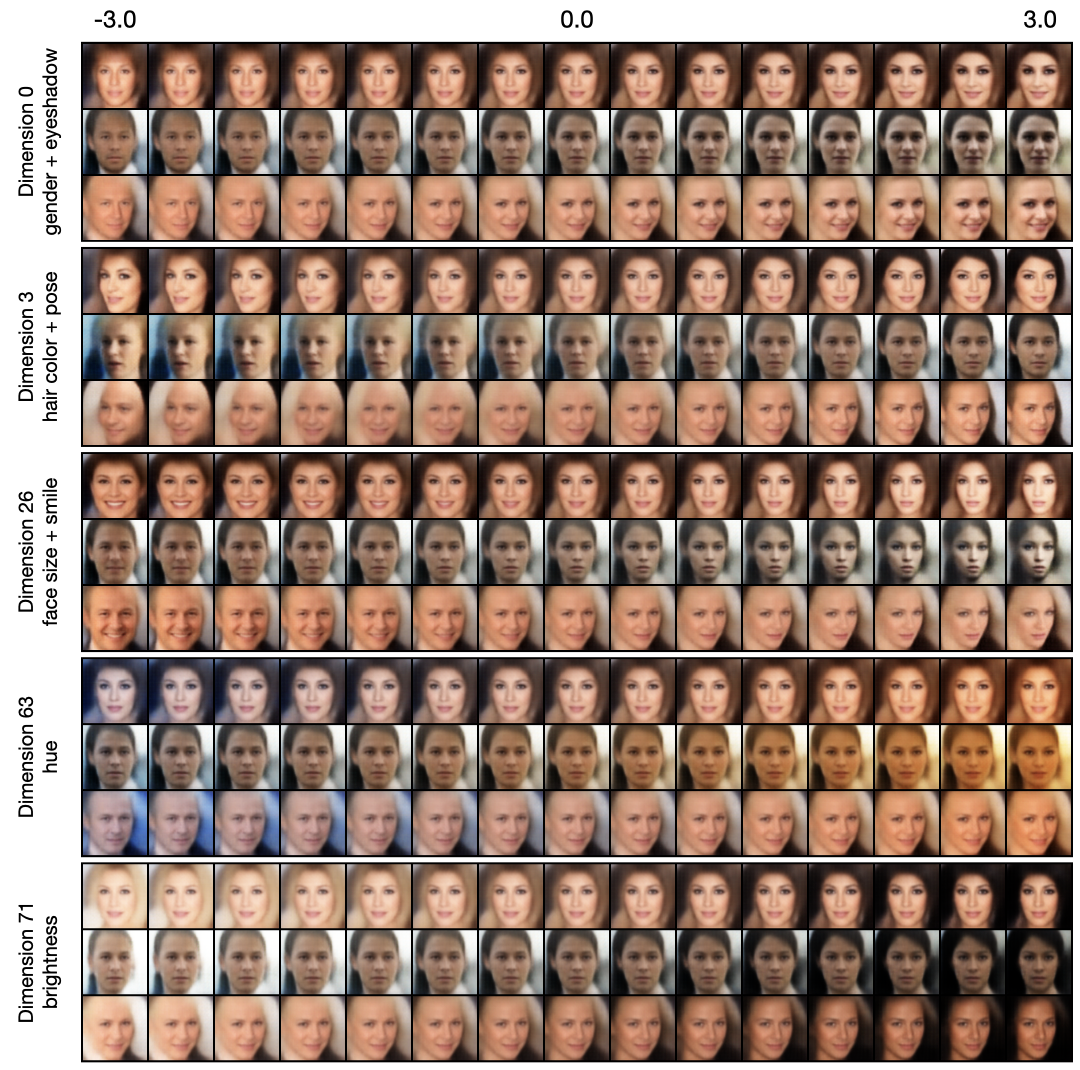 |
 |
- beta-VAE introduces a hyperparameter
$\beta$ to reweight the reconstruction term and KL term in the VAE loss function, where $\beta=1 $ corresponds to the original VAE. Larger$\beta$ creates a trade-off between reconstruction fidelity and the quality of distanglement within the learned latent representations.
Reconstruction:
| VAE | beta-VAE (beta=20) |
|---|---|
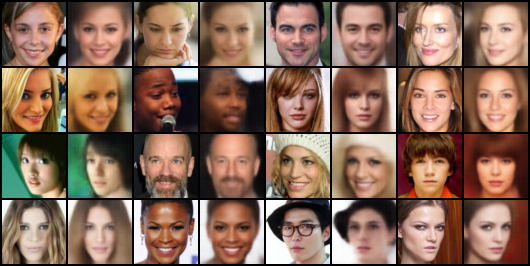 |
 |
Random samples:
| VAE | beta-VAE (beta=20) |
|---|---|
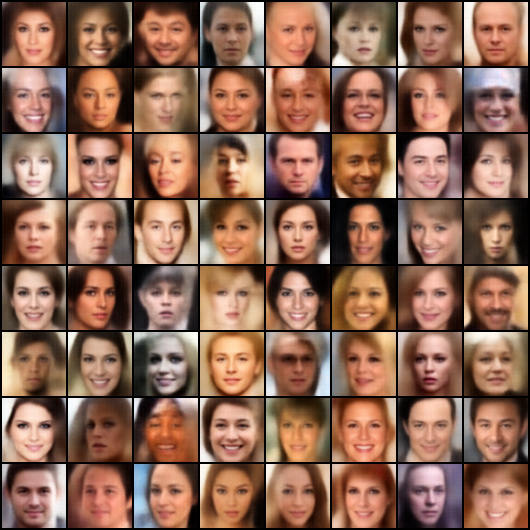 |
 |
Interpolation:
| VAE | beta-VAE (beta=20) |
|---|---|
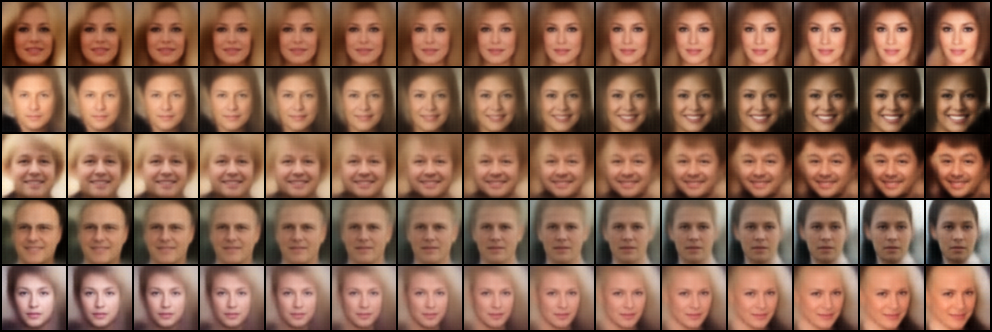 |
 |
For AE:
accelerate-launch train_ae.py [-c CONFIG] [-e EXP_DIR]For VAE:
accelerate-launch train_vae.py [-c CONFIG] [-e EXP_DIR]For
accelerate-launch train_vae.py [-c CONFIG] [-e EXP_DIR] --train.coef_kl {BETA}For AAE:
accelerate-launch train_aae.py [-c CONFIG] [-e EXP_DIR]For MMD-VAE:
accelerate-launch train_mmd_vae.py [-c CONFIG] [-e EXP_DIR]For VAE,
python sample.py -c CONFIG \
[--seed SEED] \
[--mode {sample,interpolate,traverse,reconstruct,visualize_latent}] \
--weights WEIGHTS \
--n_samples N_SAMPLES \
--save_dir SAVE_DIR \
[--batch_size BATCH_SIZE] \
[--n_interpolate N_INTERPOLATE] \
[--n_traverse N_TRAVERSE] \
[--traverse_range TRAVERSE_RANGE] \
[--traverse_dim TRAVERSE_DIM]- Choose a sampling mode by
--mode MODE, the options are:sample(default): Randomly sample images.interpolate: Sample two random images and interpolate between them. Use--n_interpolateto specify the number of images in between.traverse: Traverse along a specific dimension. Use--n_traverseto specify the number of traversed images,--traverse_rangeto specify the traversal range and--traverse_dimto specify the traversal dimension.reconstruct: Reconstruct the input.visualize_latent: Visualize the latent space. Only valid when z_dim=2.